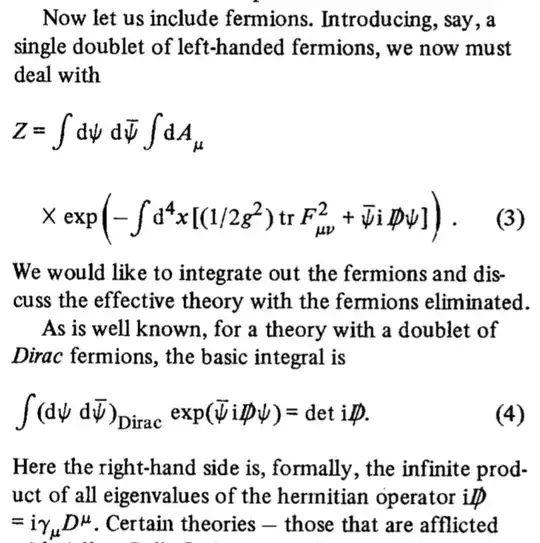I happened to read Witten SU(2) anomaly paper (1982), and come back to digest again what I said the hermitian of the Dirac operator.
- According to Prahar https://physics.stackexchange.com/a/701287/310987, Prahar said that I should not consider or ask
Is the Dirac operator $i \not D$ or $\gamma^0 i \not D$ and nonabelian gauge field $A_\mu = A_\mu^\alpha T^\alpha$ hermitian?
- But according to Witten (1982), he said the hermitian operator $i \not D$ in his first page.
So how do we reconcile with Prahar and Witten opinion on the hermitian of the Dirac operator?
- Is Witten paper in Euclidean signature so $i \not D$ is hermitian?
- If it is in Lorentz signature, only $\gamma^0 i \not D$ is hermitian?
